Barcelona head coach Hansi Flick and his staff have completed their internal review of the recent defeats to Sevilla and Paris Saint‑Germain, concluding that the root causes were defensive miscoordination and players not fully grasping on‑the‑spot tactical calls. According to a Spanish report, the analysis highlights gaps between lines, delayed shifting, and unclear in‑game triggers that fractured Barcelona’s rest defense and transition structure. The staff’s priority is to simplify pitchside instructions, standardize communication cues, and re‑drill compactness in the back line and midfield screen. While criticism has flared online, there’s also measured optimism that a clear corrective plan is now in motion.
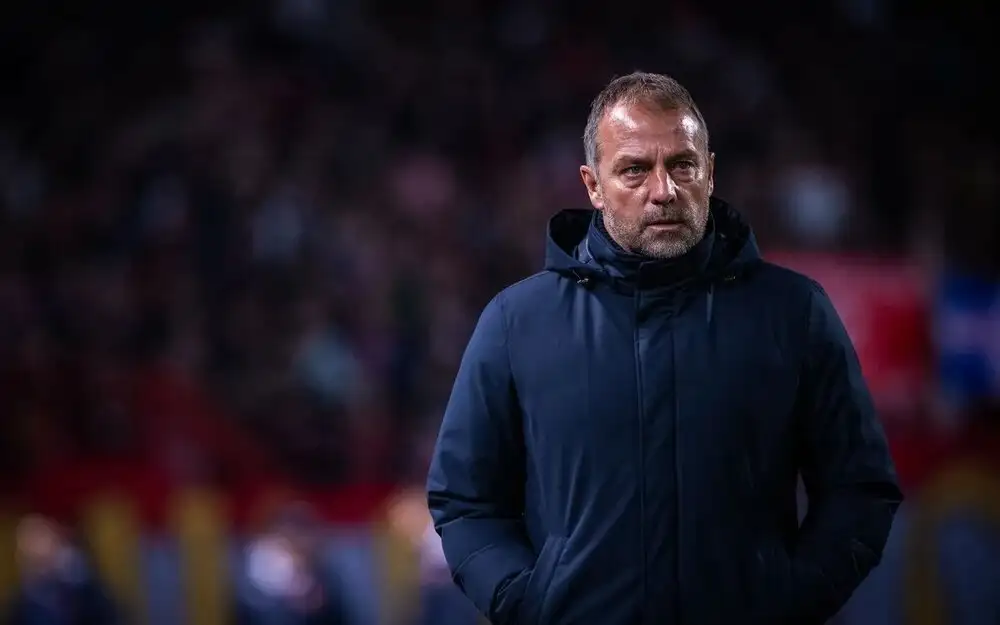
Following back‑to‑back setbacks against Sevilla and PSG, Barcelona’s technical team held review sessions at Ciutat Esportiva Joan Gamper. As reported in Spain, Hansi Flick’s post‑mortem underscored defensive miscoordination and insufficient understanding of real‑time tactical adjustments as the decisive factors. The meetings focused on transition control, line height, and in‑game communication protocols, with staff preparing targeted training interventions to address identified weaknesses.
❗️Hansi Flick and his staff have concluded that the losses against Sevilla and PSG were due to defensive miscoordination and the players not understanding tactical decisions taken on the spot. — @mundodeportivo
@BarcaUniversal
Impact Analysis
The admission of defensive miscoordination and on‑the‑spot tactical confusion offers both clarity and urgency for Barcelona. In elite matches, the margin between control and collapse often lies in synchronized micro‑movements: fullbacks’ timing to invert or hold width, the pivot’s body orientation to screen lanes, and the center‑backs’ command of depth while compressing space between the lines. Flick’s finding suggests that these chains broke at crucial moments, magnifying the opponent’s pressing traps and transition punches.
In practical terms, two areas feel most affected. First, rest defense: when Barça attack, the occupation of defensive reference zones behind the ball must be automatic. If a fullback joins the interior, the far‑side defender and the holding midfielder must lock the corridor and half‑space preemptively. Second, the clarity of live adjustments: if the sideline instructs a switch—say, from a high 4‑3‑3 press to a mid‑block 4‑4‑2—players need crisp, pre‑rehearsed cues to collapse distances in three to five seconds. Any lag breeds gaps, and quality opponents like PSG ruthlessly target the exposed channels.
Culturally, acknowledging process failure rather than scapegoating individuals can strengthen buy‑in. It places responsibility on coaching design and collective execution, which tends to be more fixable mid‑season than wholesale personnel churn. If Barça convert this diagnosis into cleaner spacing, faster shifts, and a simplified playbook for in‑game flips, the ripple effects should be immediate: fewer high‑value chances conceded, more stable possession platforms, and better field tilt to sustain pressure.
Reaction
Fan sentiment online has split into two clear currents. The first is frustration with what many perceive as deflection. Comments like “do something more efficient than giving excuses” and “really, players?” capture a belief that the coaching staff must own the breakdowns, not only the execution. The reference to a heavy scoreline—“4‑1 is way too much”—has become shorthand for the pain point: lapses cascading into a flood of chances against top opposition. Calls to “work more on defensive tactics” and “better coordination” echo a simple demand for structural coherence.
The second current is guarded optimism. Some supporters argue the team suffered two objectively poor games, but trust Flick’s seriousness and work ethic, expecting a rebound once instructions are streamlined. They point to moments of promise in buildup and chance creation; the bottleneck is transition stability and clarity under pressure. Neutral observers add that early cycles under new coaches often feature misreads when relaying touchline adjustments mid‑game, and that codifying a smaller set of triggers—rather than a broad playbook—can unlock faster, more confident reactions.
There’s also a meta‑debate about messaging. A portion of the fanbase prefers blunt accountability over technical explanations, while others welcome a transparent diagnosis that invites measurable fixes. The consensus, however, narrows to one priority: immediate, visible improvement in spacing, pressing alignment, and box protection against elite rivals.
Social reactions
Plus fatigue you can say it
Tacticalls (@Tactician90)
Bullshit... its because of them idiots keep insisted on playing with suicidal defensive structure at the halfway line. We are wasted with Hansi and others if they keep this shit high-line of defence. There are so many legends in football already talking about his stubbornness
Mx3_$$_ (@MiroslavMinchev)
Yeah no it was personnel decisions tactics and unfit players it was the coaching
James Powers (@gonpowinc)
Prediction
Expect Flick to compress the instruction set and prioritize defensive automations over nuanced, opponent‑specific wrinkles—at least in the short term. Training will likely emphasize three staples: tighter vertical distances (8–12 meters between lines), faster weak‑side shift on opposition switches, and pre‑assigned hierarchy for last‑line decisions (who steps, who covers, who protects the half‑space). That should reduce hesitation when the bench orders a mid‑game scheme change.
In possession, Barça may reintroduce a more conservative rest‑defense lattice: one fullback committed forward at a time, the far fullback holding a narrower position, and the pivot anchoring slightly deeper to protect central corridors. Against transition threats, wingers could be tasked with earlier counter‑press angles rather than chasing the ball carrier, channeling play toward the touchline where traps are set.
Personnel tweaks should be incremental rather than sweeping—rewarding the most vocal organizers in the back line and midfield screen, and privileging profiles comfortable defending large spaces. Set‑piece preparation will likely get an uptick, with clearer assignments to curb second‑phase chaos. If executed, the near‑term outcome should be fewer big chances conceded and a calmer progression phase. Over a 4–6 game sample, clean sheets and lower xGA should validate the course correction, restoring confidence ahead of the next marquee European tie.
Latest today
- Real Madrid and Como set to finalize Nico Paz summer move after early summit
- Real Madrid reject loan bids for Gonzalo García - academy No.9 to stay and fight for minut...
- Real Madrid unrest after Elche - pessimism, angry heavyweights, questions over leadership
- Real Madrid face fresh injury headache before match - Courtois, Alaba, Carvajal, Huijsen a...
Conclusion
Barcelona’s review under Hansi Flick lands on a constructive, if uncomfortable, truth: structure and communication—not talent—betrayed them in key moments against Sevilla and PSG. That diagnosis is fixable. By shrinking the tactical menu mid‑match, hard‑coding rest‑defense positions, and empowering clear on‑field commanders, Barça can close the “reaction gap” that elite opponents have exploited.
The broader lesson is procedural. Top teams thrive on repeatable habits that hold under stress. If flickers of confusion vanished even for 10–15 minutes, the results swung sharply. The pathway forward is therefore less about wholesale reinvention and more about ruthless clarity: one language of cues, one tempo of shifts, one standard of compactness. Do that, and the attack regains its platform, the back line reclaims territory control, and the narrative pivots from post‑mortems to momentum.
Blame may dominate the discourse today, but the staff’s transparency suggests accountability and direction. The coming fixtures will test whether diagnosis becomes execution. If the training ground translates to the pitch, Barcelona’s ceiling remains intact.







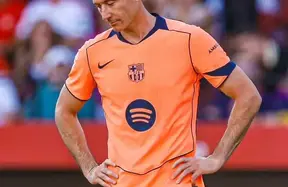

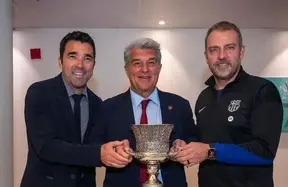
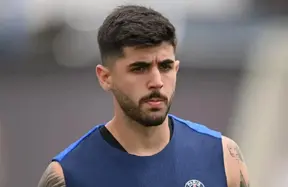
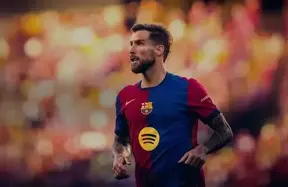
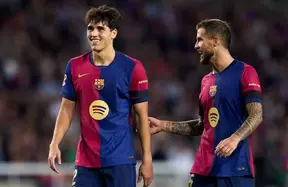
Tacticalls
Plus fatigue you can say it
Mx3_$$_
Bullshit... its because of them idiots keep insisted on playing with suicidal defensive structure at the halfway line. We are wasted with Hansi and others if they keep this shit high-line of defence. There are so many legends in football already talking about his stubbornness
James Powers
Yeah no it was personnel decisions tactics and unfit players it was the coaching
Trinipapaboiz
That's bullshit..... I love Flick but his high line won't work against teams who have players run from deep in their half. We can have prime Maldini or Baresi, when a player runs from deep, even if we press properly, any good passes would break that line with a well timed pass
C.f
We know
Leopold J Seme
So the coaches are to blame.
Robertrobertson
Shut up big fool,you cause lots of people lose millions of money against Sevilla
Adeshina Excellence
In other words, high line continues...
Sweep
they'll improve
ekene
Make nothing do that Highline oo
FCBEST ❄
Hansi Flick is not making beyond Christmas, sad to see his downfall.
Awuah Emmanuel
If you don't have a starting cb duo, what do you expect. You have Christensen and only you knows why you're not playing him. If you keep on changing your cb duo, there will never be any coordination between them. Know this and have peace
T F G
They better do smth more efficient than giving excuses
Yonko333
No shit
Pixl_Pedri
I am still not over the Sevilla game that was unbelievable
Pan Nowowiejski🇵🇱
😁😂🤣 really? Players? And Herr Flick and his staff did everything right? Comm'on!!! What a 🐂💩‼️
Mohan's Football
Clear issues, need better coordination.
Online Me ✨
I have already said this... We need to work more on defensive tactics
Chapterz Banky 🔬 🥼
It was obvious that we had 2 bad games against Sevilla and PSG, but I was not disturbed because we have a serious coach who doesn't joke with his work. The team and the players will bounce back and make us happy again.
Sagacious Boy
They'll explain taya 😂😂😂
Dante
It's due to our horrible fullbacks and bum strikers both Lewy and Ferran Torres
꧁☆Dr Saira Amber🇦🇪☆꧂®
Yr
J5
Interesting insights! It’s always a challenge when communication on the field doesn't click. Looking forward to seeing how they address these issues in the upcoming matches!
Rhoda🌹
4-1 is way to much 🤦🏽♂️🤦🏽♂️🤦🏽♂️
The Thalion Initiative (US)
Our Comparative Biology Program is one of the 5 focus areas in our Phase 1 Workplan. But how does it help with human aging?
Aeromexico USA
Every Aeromexico journey is as extraordinary as the places we take you. ✈️
Disputifier
Which way brand owner?